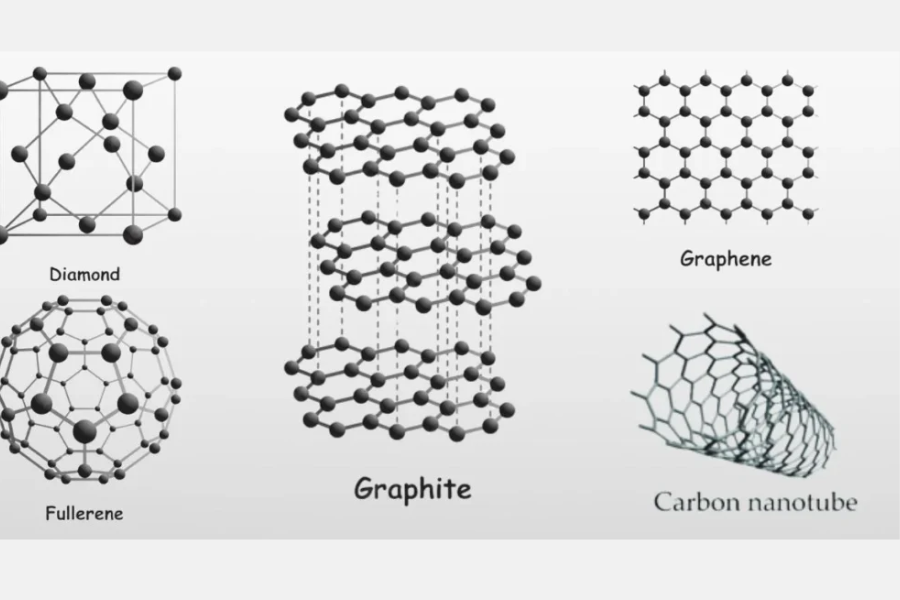Welcome, fellow eco-conscious individuals, climate activists, and advocates for sustainable living! As we continue on our path towards a greener future, it’s vital to shed light on the often overlooked yet significant players in climate change. Today, let’s explore the mysterious realm of carbon and its profound effects on our planet. By the end of this read, you’ll have a clearer grasp of what carbon is, how it impacts climate change, and what steps you can take to lessen your carbon footprint.
First off, what exactly is a carbon footprint, and why should we even bother caring? Put simply, a carbon footprint measures all the greenhouse gases emitted directly and indirectly through human activities. These emissions are quantified in equivalent tons of carbon dioxide (CO2). They play a major role in global warming and, consequently, climate change. Understanding and reducing our carbon footprint is crucial if we want to mitigate our impact on the environment.
What Is Carbon?
Carbon, at its core, is one of the most abundant elements on our planet. It’s like the Lego piece of life, found in just about everything living. From the lush trees in the forest to the tiniest microorganisms, carbon is woven into the fabric of life itself. And it doesn’t just sit still; it’s in constant motion, cycling through the environment in various forms.
One of its most well-known forms is carbon dioxide (CO2), which we often hear about in discussions on climate change. When we burn fossil fuels like coal, oil, and gas, we release CO2 into the atmosphere. Another form is methane (CH4), a potent greenhouse gas emitted from sources like agriculture, landfills, and natural gas production.
But carbon isn’t just floating around as gases. It’s also part of organic compounds, forming the backbone of carbohydrates, proteins, and fats that make up living organisms.
So, in essence, carbon is this incredibly versatile element that’s essential for life as we know it. But its role in the environment extends beyond just being a building block; it’s also a key player in the delicate balance of Earth’s climate.
A.The Elemental Nature Of Carbon
Carbon stands out from the crowd because it’s like the ultimate team player in the chemistry world. It’s super good at making strong bonds with all sorts of other elements, which means it can team up with them to create a crazy amount of different compounds. This ability to team up with pretty much anyone makes it a big deal in the world of organic molecules, which are basically the building blocks of life on our planet.
Think about it: from the stuff that gives us energy, like carbohydrates, to the bits and bobs in fossil fuels, carbon is there, front and center, making things happen. It’s like the MVP (Most Valuable Player) of the molecular world, playing a crucial role in keeping life ticking along smoothly.
B. Carbon In Earth’s Systems
Carbon doesn’t just sit still on Earth; it’s on the move, cycling through different parts of our planet in what we call the carbon cycle. This natural process is like a big dance where carbon gets passed around between the biosphere (that’s all living things), the atmosphere (the air around us), the hydrosphere (water bodies like oceans and rivers), and the geosphere (the Earth’s rocky outer layer).
This carbon cycle has been happening for ages, keeping things in balance and making sure life can thrive. But here’s the thing: humans have thrown a wrench into this well-oiled machine. Our activities, like burning fossil fuels and cutting down forests, have messed with the balance of carbon in the atmosphere. This has led to more carbon compounds hanging out in the air, which is causing some serious trouble for the planet’s climate.
The Nature Of Cảbon

Atomic Properties Of Carbon:
With an atomic number of six, carbon possesses four valence electrons, allowing it to form covalent bonds with other atoms. This unique characteristic makes carbon the champion of molecule-building, capable of forming chains, rings, and intricate structures that lay the groundwork for organic chemistry.
Chemical Reactions:
Carbon promptly participates in compound responses, forming bonds with different components like hydrogen, oxygen, nitrogen, and sulfur. This capacity to respond with a wide range of components permits carbon to make a shocking array of particles, each with particular properties and capabilities.
Allotropy:
One striking element of carbon is its capacity to exist in various allotropes, each with a novel set of molecules and distinctive properties. Diamond, with its sparkling brilliance, is the hardest natural substance known, while graphite, its close cousin, is known for its soft, slippery nature and electrical conductivity. These are just two instances of the diverse physical and chemical properties that can arise from varying forms of the same element.
Carbon Compounds:
Organic compounds, which are primarily composed of carbon atoms, are the backbone of life as we know it and a cornerstone of modern chemistry. Their significance lies in their diverse and complex structures, which incorporate carbon atoms forming bonds with hydrogen, oxygen, nitrogen, and various other elements.
These compounds are the building blocks of biological systems, essential for the functioning of living organisms. They are involved in critical processes such as metabolism, growth, and reproduction. From the DNA that carries genetic information to the proteins that carry out cellular functions, organic compounds are integral to the functioning of cells and organisms.
Moreover, organic compounds extend their influence beyond biology, playing crucial roles in fields like medicine, where they form the basis of pharmaceuticals and drug development. They are also vital in industry, serving as raw materials for the production of plastics, fuels, solvents, and countless other products that we rely on daily.
In our everyday lives, organic compounds are everywhere, from the food we eat to the clothes we wear and the materials used to construct our homes. Their versatility and importance make them indispensable components of both natural and synthetic systems, shaping the world around us in profound ways.
Environmental Impact Of Cảbon

Carbon Footprint:
A carbon footprint represents the total amount of greenhouse gases, mainly carbon dioxide, released directly or indirectly by human activities. These emissions stem from various sources like energy usage, transportation, and industrial processes, ultimately contributing to climate change. Recognizing and reducing carbon footprints are vital steps toward lessening our environmental impact and fostering sustainability.
Carbon Emissions:
Carbon emissions, primarily stemming from the burning of fossil fuels, play a significant role in exacerbating climate change. When fossil fuels are burned, they release carbon dioxide into the atmosphere, intensifying the greenhouse effect and contributing to global warming. Taking action to mitigate these emissions through the adoption of renewable energy sources and implementing efficiency measures is crucial for addressing climate change and promoting environmental sustainability.
Global Warming:
Carbon’s impact on the environment is profound, particularly through its role in global warming. Increased carbon levels enhance the greenhouse effect, resulting in higher temperatures and disruptions in the climate. This phenomenon fuels extreme weather events, sea level rise, and ecological imbalances, underscoring the urgent need for mitigating carbon emissions and embracing sustainable practices to combat the adverse effects of climate change.
Sustainable Practices With Carbon
Carbon Capture:
Carbon capture utilizes advanced technologies to capture and store carbon dioxide emissions, primarily from industrial processes and power generation facilities. These innovative methods aim to prevent the release of carbon dioxide into the atmosphere. The captured carbon can then be repurposed for industrial use or stored underground, effectively reducing its environmental impact. This approach presents a crucial strategy for combatting climate change by mitigating the release of greenhouse gases.
Carbon Offsetting:
Carbon offsetting involves individuals and organizations taking responsibility for their carbon emissions by investing in projects that either reduce or remove greenhouse gases from the atmosphere. These projects can include activities like tree planting, supporting renewable energy initiatives, and preserving forests. The goal of carbon offsetting is to balance out emissions, thereby promoting environmental sustainability and helping to mitigate the impacts of climate change.
Sustainable Technologies:
The progress of sustainable technologies is pivotal in decreasing our reliance on practices that heavily involve carbon. These technologies prioritize renewable energy sources, enhancements in energy efficiency, waste minimization, and the use of eco-friendly materials. By advocating for sustainability, they aid in reducing environmental harms and fostering a future that is both greener and more robust.
Cảbon In Technology
Fossil Fuels: The Impact of Carbon and Its Ramifications
The energy that powers our modern world largely comes from fossil fuels, which are the remnants of ancient organisms rich in carbon. While these fuels provide cheap and readily available energy, their combustion releases significant amounts of carbon dioxide into the atmosphere, contributing to climate change and its devastating effects.
Carbon Nanotechnology
Carbon’s versatility extends into the realm of nanotechnology. Carbon nanotubes (CNTs) and graphene are groundbreaking materials with remarkable strength, electrical conductivity, and thermal properties. These materials revolutionize industries from electronics to medicine, opening up new avenues for innovation and advancement.
Renewable Energy
Carbon-based materials play a crucial role in advancing renewable energy technologies. For instance, carbon fibers are used to manufacture wind turbine blades, making them lighter and more efficient. Additionally, carbon electrodes are essential components of supercapacitors and batteries, which are vital for energy storage in renewable power systems.
Carbon In Human-Made Systems
Industrial Significance
The industrial applications of carbon are vital to our modern way of life. In manufacturing, carbon-based compounds serve as essential building blocks for a wide array of products, ranging from plastics and textiles to pharmaceuticals and dyes. In construction, materials like concrete and steel, which contain carbon, form the backbone of infrastructure projects. Additionally, in the energy sector, where discussions about carbon are often contentious, coal, oil, and natural gas play pivotal roles as both energy sources and raw materials for various industrial processes.
Technological Utilization
Carbon’s versatility finds widespread use in various technological applications. The semiconductor industry, in particular, has greatly benefited from materials like graphene and carbon nanotubes, which hold promise for driving advancements in electronic devices. Charcoal and carbon black are commonly employed in electronics and automotive manufacturing for their unique properties. Moreover, in aerospace engineering, carbon fiber composites have revolutionized aircraft construction, enabling the development of lighter, stronger, and more fuel-efficient planes.
Carbon In Environmental Processes
Climate Regulation
Carbon’s impact on the environment is most evident in its role in climate change. When fossil fuels are burned, carbon dioxide is released into the atmosphere, where it acts as a greenhouse gas, trapping heat and causing global temperatures to rise. This has profound effects on weather patterns, sea levels, and the health of ecosystems. Managing and understanding carbon emissions are central to global efforts aimed at combating climate change.
Interactions With Ecosystems
The amount of carbon present in soils directly influences their fertility and their capacity to store carbon. In forests, the carbon stored in trees and soils is a crucial part of the global carbon cycle. Deforestation and changes in land use can release large quantities of stored carbon into the atmosphere, accelerating the pace of climate change. Conversely, initiatives like reforestation and sustainable forest management practices that enhance carbon storage can contribute significantly to efforts aimed at mitigating climate change.
Future Innovations In cảbon Use

Emerging Technologies:
Continual research is uncovering exciting new ways to harness carbon in emerging technologies. These breakthroughs span various fields, including nanotechnology, electronics, and materials science. Carbon-based materials such as graphene and carbon nanotubes are poised to revolutionize industries with their remarkable properties, offering innovative solutions to modern challenges.
Carbon-Based Materials:
The advancement of sophisticated materials, particularly carbon-based composites, holds tremendous promise across a range of industries. Carbon-based materials boast exceptional strength, lightweight characteristics, and durability, making them ideal for applications in aerospace, automotive, construction, and electronics. Their versatility and performance attributes offer groundbreaking solutions to address evolving industry demands.
Research and Development:
Investments in research and development are driving innovations that could reshape the future landscape of carbon utilization. Ongoing endeavors explore new applications, materials, and processes, with the aim of harnessing carbon’s versatility sustainably. These initiatives hold potential for tackling global challenges and propelling advancements in technology, industry, and sustainability.
FAQS
Q. What is a carbon footprint, and why is it important?
A carbon footprint is a measure of the total greenhouse gas emissions, primarily carbon dioxide, produced directly or indirectly by human activities. It’s crucial because these emissions contribute to climate change, emphasizing the need for individuals and organizations to understand and reduce their carbon footprint.
Q. How do carbon capture and carbon offsetting work?
Carbon capture involves the capturing and storage of carbon dioxide emissions from industrial processes to prevent them from entering the atmosphere. Carbon offsetting, on the other hand, involves balancing carbon emissions by investing in projects that reduce or remove greenhouse gases elsewhere, such as tree planting or renewable energy initiatives.
Q. What are the impacts of carbon emissions on climate and ecosystems?
Carbon emissions, especially from burning fossil fuels, contribute to global warming by increasing the concentration of greenhouse gases in the atmosphere. This results in changes in weather patterns, rising sea levels, and disruptions to ecosystems, underscoring the urgent need to mitigate carbon emissions and promote sustainability.
Conclusion
Carbon, with its dual role as both a contributor to progress and a threat to the environment, significantly shapes our world. While carbon-based technologies have driven advancements in various sectors, they have also led to environmental degradation and climate change. As we confront the challenges of the 21st century, adopting sustainable and innovative approaches to carbon management is essential for ensuring a greener and more resilient future. By collectively embracing research and development and committing to sustainable practices, we can mitigate the negative impacts of carbon emissions and pave the way for a more sustainable and prosperous world for future generations.




